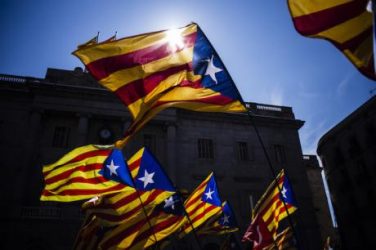The outstanding German composed this work while doing his version of the Grand Tour some 190 years ago. Having produced a first movement which he considered one of the jolliest pieces he had written, he then confessed that subsequent movements had caused him some bitter times. Though he directed the first performance (to great acclaim) in London in 1833, he did not publish the score until 18 years later (that substantial delay meant that “The Italian” is classified as the Fourth Symphony when in fact it was the Third he wrote). It seems clear that Mendelssohn himself went through more inner turmoil than is evidenced in the music.
Italy similarly has an apparently inexhaustible capacity to make individuals and groups go through all the emotions, often within an extraordinarily short space of time. Mendelssohn’s own masterpiece lasts only about 30 minutes, beginning in a major key and ending in a tonic minor (which was at the time a revolutionary approach to symphony writing). The temptation to use “The Mendelssohn Mirror” through which to look at current events in Italy is thus, like all worthy temptations, just too good to refuse.
Let’s take a telescope to the past 18 months. The national elections of March 2018 produced a Parliament where the prospects of producing a workable coalition (in Italian politics that means something that might last upwards of 12 months) looked grim. But within a couple of months the two largest single groups, namely the Five Star Movement (M5S) and La Lega, formed a government built around a program agreed by both. Contrary to almost all predictions, these strange bedfellows then proceeded to actually do several things. The headline stuff came from the side of La Lega, and it had three main components.
First, a tough policy on illegal immigration, accompanied by strong denunciations of the failure of other EU States (meaning mostly the large West European ones) to share the burden. Second, an equally tough line (which M5S claimed to share) with regard to the Italian national budget and the outstanding public debt. This contentious issue was guaranteed to generate further controversy with the EU, forever mired in Lutheran austerity. Since the EU Commissioner delivering the sermons was the hapless Frenchman, Pierre Moscovici, and the Heads of both La Lega and M5S engaged in sundry controversies with President Macron, the disputes with the EU were in reality mostly with Germany and France. Third, an expressed desire to “get things moving” on some changes within the Peninsula. La Lega pushed primarily for greater regional autonomy (a multi edged thrust, since the regions of the North, its true heartland, are the only ones currently with the means to be autonomous) and rapid decisions on major public tenders. Accomplishing the latter aim was significantly complicated by the Morandi bridge disaster of mid -August 2018, since that event threw the ever present problem (and legacy) of corruption back onto center stage. M5S concurred in several of the Lega initiatives (though not all), a position which cast serious doubt on the credentials it sought to promote.
The elections to the European Parliament held just one year after formation of the so-called “Gialloblu” coalition yielded dramatically different results for the coalition partners. La Lega had major success, while everyone else on the political landscape suffered serious losses. This outcome seems to have persuaded Matteo Salvini that the mix of what he claimed to perceive as moves to block his ideas, constant criticism of his actions, and the electoral euphoria following May 2019, set a favorable scene for new national elections would give him very substantial power. All he had to do, it seems, was demand that the existing President of the Council, Giuseppe Conte, leave office so that elections could be called. But Conte refused to disappear. On the contrary, he both excoriated Salvini and then worked towards a new coalition, this time with the Democrat Party (PD), thereby avoiding new elections and leaving La Lega in opposition.
No one with more than the briefest experience of Italy imagines that there is anything in the least solid or sustainable in the present situation. The reasons why political surfing will continue pell-mell are crystal clear. The PD is in an acute stage of decomposition. The other Matteo, Renzi, driven by the same limitless ambition as Matti S, has been working frantically since the December 2016 defeat of his referendum proposals for constitutional change to find a way of again occupying center stage. So on 16 September he finally announced the creation of a new party in the Lower House of Parliament (under the Constitution, such a move cannot happen in the Senate unless and until there are new elections). Renzi claims the new group will support the recently formed Giallorosso coalition, though few can have confidence in such a statement. What matters, however, is the likely political direction of the group. It will very probably be center-right. Renzi has always been the political heir to Berlusconi (“il figlio di Berlu”). It was Berlusconi who wanted a French (or US) style of presidential governance in Italy, something Renzi had hoped would come about via the proposed constitutional changes of three years back. Only last week, one of Berlusconi’s spokesladies, Mara Carfagna, indicated publicly that Forza Italia would be taking a center liberal position in the new political landscape. Renzi clearly believes he can gather support from there, and several other quarters, to build a center right formation that could win elections. He is also positive that the EU will be happy to see such a group in charge on the Peninsula, matching as it would the coloring of a number of political forces in major West European countries.
A series of regional elections is about to take place in Italy. The major region involved, Umbria, has already witnessed countless political meetings with many of the leading politicians present. The new Minister of Foreign Affairs, Luigi di Maio, has been especially active, proposing that M5S and PD (however that may now be construed) have a kind of electoral pact for the voting (perhaps a bit on the lines of what Farage has been proposing to Johnson in England). Whether this happens or not is currently not clear. But what is certain is that the “churn of the urns”, that favorite Italian pastime, is once more about to offer us another twist to the story.
Amidst the inglorious mayhem, it remains striking that no political group offers any sort of clear vision of where it thinks the country should try to go. In a territory as heterogeneous as Italy, this is perhaps not a real surprise. Since the country is not a nation, maybe a general vision would be a fatal political error – so the smart thing is to say nothing. All the same, when Switzerland, a neighboring country where there is emphatically no love lost among the main regions, considered it was in difficult straits around the early 1990s, it did produce a general route map, contained in “Das Weisse Buch”, which had favorable results. Incidentally, the name chosen for this key work of political and social change echoed that of one of the oldest manuscripts relating to Swiss history. The absence of any kind of direction means that the territory will just be carried along by the ebbs and flows of the currents that come from abroad. While there is ferocious surfing within the place, it drifts hopelessly without a compass in the external seas.
The inability, or unwillingness, of Italians to recognize that they can learn anything from other persons or places is in fact a major characteristic of the territory. Everyone is plying their own version of “eccellenza”, without considering that maybe, just maybe, someone, somewhere else on planet earth, might have not only good ideas but, more importantly, also have developed good practices which could be transferred, mutatis mutandis, to the Peninsula. Now it is true that quite a few young Italians have realized that eccellenza is not a uniquely Italian asset. They emigrate not only to study abroad, but also to obtain well remunerated employment, or to establish firms, in other countries. Extraordinarily enough, Italian employers do not seem to have grasped that a talented young person might examine the opportunities, financial and otherwise, offered outside Italy as well as within it, when deciding whether to leave or not. The brain drain is as much push (from internal inertia) as pull (from external dynamism). The net result is that yet another cleavage has been created on the territory. It is between those closeted within their own certainties of superiority, and those who are aware that epochal changes, of every type, are occurring elsewhere.
Back to Mendelssohn. He was composing at the same time that Giacomo Rossini was doing the same (intriguingly enough, among his compositions is the famous William Tell overture – the inspiration for the William Tell story came from the original version of the Swiss Weisses Buch). Both musicians, the German and the Italian, sought to give us quite light relief through troubled times, as if they too were well aware that surfing is always necessary. But there was a difference. Rossini, an accomplished chef (Cinque Stelle ?!), gave us an hors d’oeuvre, an apericena – he did not pretend to more. Mendelssohn, in the best German tradition, tried for the complete offering, a musical full meal. That admirable optimism landed him in trouble – with himself. Perhaps that is a warning to keep expectations, if not ambitions, very low. Even Mendelssohn went from major to minor.
Peter O’Brien, Brussels, September 2019





